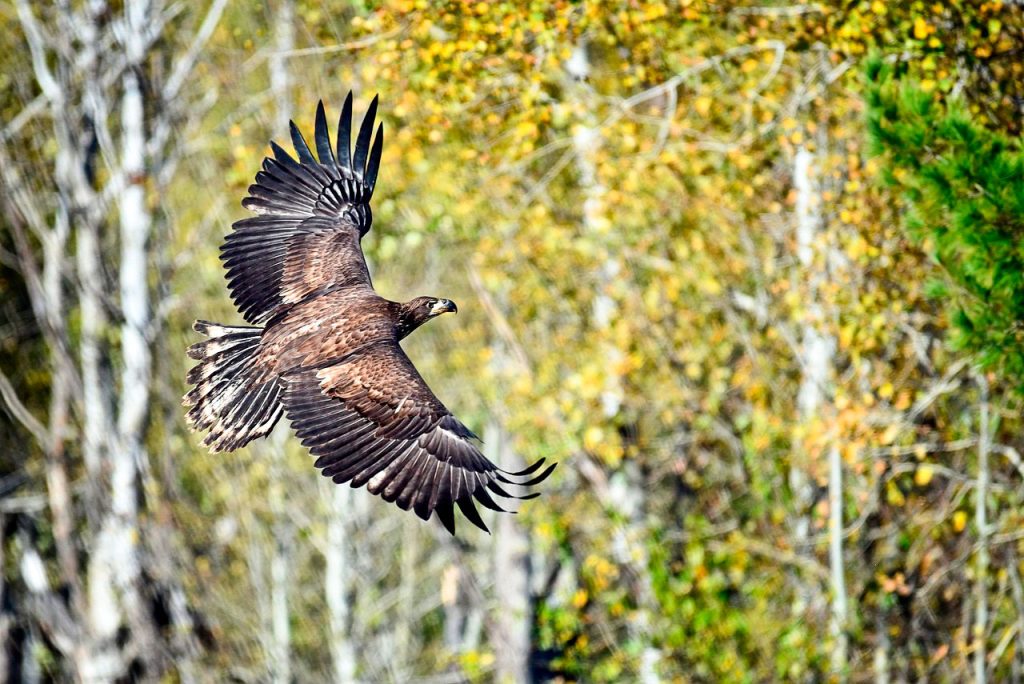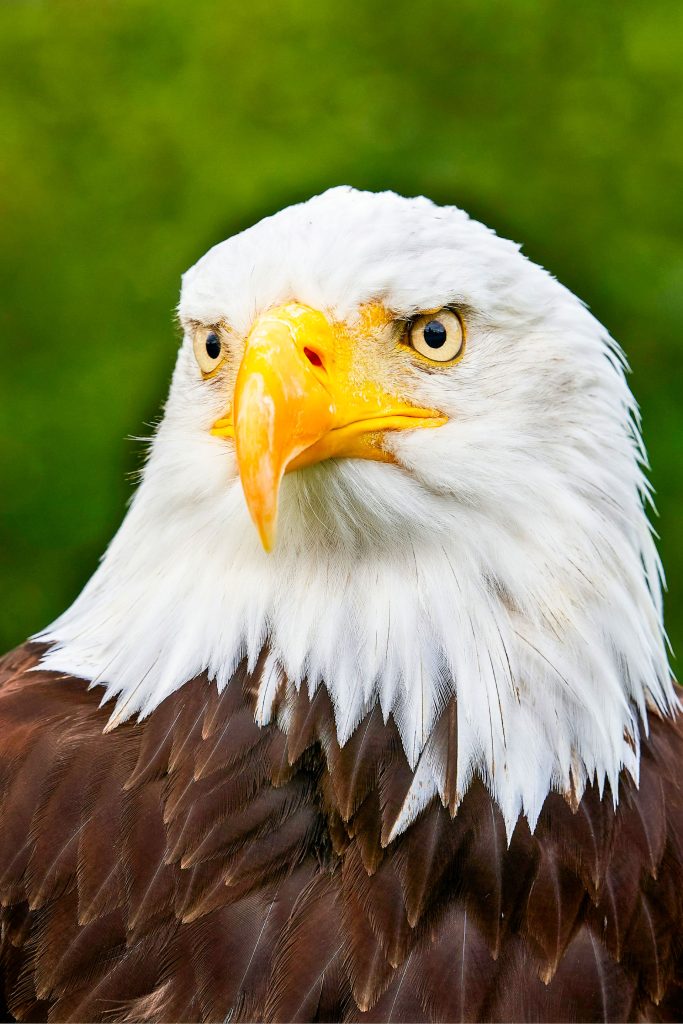Bald eagles in Colorado

A bald eagle soaring over a prairie dog town near Douglas County.

Juvenile bald eagles can be difficult to identify because they lack the signature white head until they are full adults at about 5 years old.
There are an estimated 300 resident bald eagle pairs that live in Colorado year-round, and that number surges to 1,000 pairs in the winter, when some birds migrate from places with less food available in the cold months—November to March.
These birds that mate for life are a remarkable comeback story. In the 1700s, bald eagles were abundant, with numbers in the hundreds of thousands. But by 1963, the number had declined to just over 400 nesting pairs across the lower 48 states, due to habitat destruction and the use of the insecticide DDT. The species was listed as endangered in 1978, with perhaps 10 nesting pairs in Colorado. DDT was banned and conservation efforts began, leading to the recovery of the species. By 2001 there were more than 3,300 pairs in the U.S. with about 50 nesting pairs in Colorado. In 2007, bald eagles were taken off the endangered species list with an estimated 9,500 nesting pairs in the U.S. Since then, their numbers have continued to grow. Today there are estimated to 315,000 bald eagles in the U.S., with more than 70,000 breeding pairs.
Bald eagles love fish and are most often found near rivers and reservoirs in Colorado, Barr Lake in Brighton being a particular favorite. In Douglas County, bald eagles are likely to be found in nests in the tops of tall cottonwoods, or soaring high above prairie dog towns, searching for their next meal. Bald eagles also prey on ducks, geese and other birds and small mammals.
Bald eagles can be found at any time of day and often their signature white head is the first thing bird watchers spot. Juvenile bald eagles can be much more difficult to identify and can sometimes be mistaken for golden eagles. Young bald eagles start off dark brown, entirely lacking the white head and tail plumage they are known for, even their beaks are dark. At 2 to 3 years old, they gain white mottling over their whole bodies and their beaks begin to turn yellow. By 4 years old, they begin to develop a white head and tail and a yellow beak, and any white body feathers are replaced with brown. By 5 years old, bald eagles are adults with their final plumage pattern.

The national bird has seen increasing numbers in Colorado, with 300 resident pairs and up to 1,000 migrating pairs.
Did you know?
The cry of a bald eagle is a high-pitched squeak or whistle, one that could even be described as “cute.” The majestic, piercing scream commonly heard in movies is actually the call of the much smaller red-tailed hawk (another bird native to Colorado).
Although bald eagles have long been a symbol of America, it was not until December 24, 2024, that Congress legislatively designated the bald eagle as the national bird of the United States.
The Bald Eagle Protection Act of 1940 made it illegal to possess, kill or sell bald eagles.
Article and photo by Rachel Poe; courtesy photos